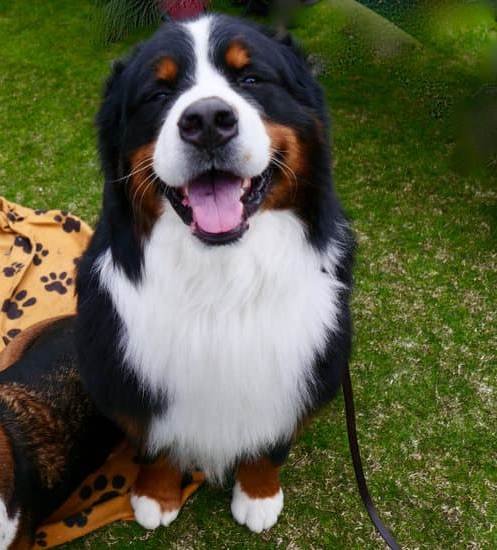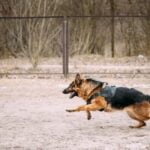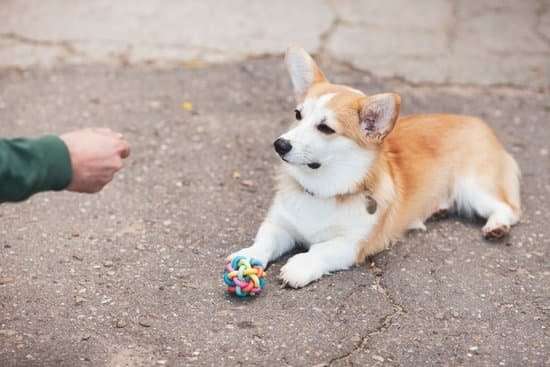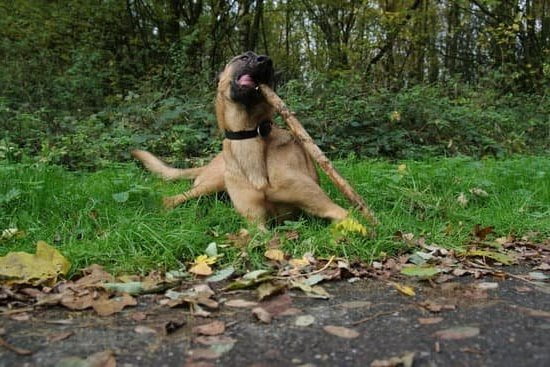Training our furry companions can sometimes be a challenging but rewarding experience. One common issue that dog owners face is handling their pets’ reactions in various situations. In this article, we will delve into the topic of how to train out dog reactions, providing insights and tips on understanding and addressing these behaviors effectively.
When it comes to training out dog reactions, it is essential to first have a clear understanding of what triggers these responses in our canine friends. Dogs may react due to fear, anxiety, territorial instinct, or a lack of socialization. By identifying the root cause of their behavior, pet owners can then tailor their training approach to address and modify these reactions appropriately.
Addressing dog reactions is not just about correcting negative behaviors but also about fostering a harmonious relationship between you and your pet. Training out these reactions not only improves your dog’s quality of life but also enhances the bond you share with them. Through patience, consistency, and positive reinforcement techniques, dog owners can help their furry companions overcome troublesome behaviors and thrive in various environments.
Common Types of Dog Reactions
Dogs, like humans, can exhibit a wide range of reactions in different situations. Understanding the common types of dog reactions is crucial in effectively training them to respond appropriately. Here are some key types of dog reactions and how to address them:
1. Aggression: One of the most well-known dog reactions is aggression, which can manifest in growling, snarling, or even biting. It is important to address aggressive behavior promptly and effectively through proper training techniques. This may include desensitization exercises, teaching alternative behaviors, and rewarding calm responses.
2. Fear: Dogs can also react out of fear, which may result in trembling, cowering, or hiding. To address fear-based reactions, it is essential to create a safe environment for your dog and gradually expose them to the trigger while providing positive reinforcements. Building their confidence through training and socialization can help reduce fearful reactions.
3. Excitement: Some dogs may exhibit overly excited reactions such as jumping, barking excessively, or pulling on the leash. Training out these reactions involves teaching impulse control, implementing calm-down cues, and redirecting their energy towards appropriate behaviors. Consistency in training methods is key to managing excited responses effectively.
By understanding these common types of dog reactions and implementing appropriate training techniques, pet owners can help their furry companions learn how to respond more positively in various situations. Remember that each dog is unique, so patience and consistency are essential when working to train out undesirable reactions in our beloved pets.
The Importance of Training Out Dog Reactions
When it comes to owning a dog, understanding their reactions is crucial for their well-being and the safety of those around them. Dogs may react in various ways based on their breed, personality, past experiences, and current environment. Some common dog reactions include barking, growling, jumping, or even aggression towards other animals or people.
Training out these reactions is essential to ensure that your furry friend can coexist peacefully with others and navigate the world confidently. By addressing these behaviors early on, you can prevent potential conflicts and create a harmonious relationship with your pet. With proper training techniques and consistency, you can help your dog learn appropriate responses to different situations.
One effective way to train out dog reactions is through positive reinforcement. This involves rewarding good behavior with treats, praise, or toys to encourage your dog to repeat that behavior in the future.
For example, if your dog tends to jump on visitors when they arrive, you can teach them to sit politely instead by rewarding them when they remain calm. Positive reinforcement helps your dog associate desirable actions with pleasant outcomes, making them more likely to exhibit those behaviors consistently.
| Positive Reinforcement Techniques | Description |
|---|---|
| Clicker Training | Using a clicker to mark desired behaviors and follow up with a reward. |
| Verbal Praise | Praising your dog verbally for obeying commands or displaying desirable behavior. |
| Treat Rewards | Offering tasty treats as a reward for following instructions or remaining calm in challenging situations. |
Setting Realistic Expectations for Training
One way to train out a dog reaction is by breaking down the training process into small, manageable steps. For example, if your dog exhibits aggressive behavior towards other dogs while on a walk, start by working on basic obedience commands in a controlled environment before gradually exposing them to other dogs. This gradual approach can help your dog feel more comfortable and confident in different situations, reducing their reactive behavior over time.
Positive reinforcement techniques are also incredibly effective in training out unwanted dog reactions. Rewarding good behavior with treats, praise, or toys can help motivate your dog to repeat those behaviors while discouraging negative reactions.
Consistency is key in using positive reinforcement – make sure to reward good behaviors every time they occur to reinforce the desired response effectively. By staying consistent and patient, you can make progress in training out your dog’s reactions and strengthen the bond between you and your canine companion.
| Training Method | Effectiveness |
|---|---|
| Positive Reinforcement | Highly Effective |
| Consistent Training Approach | Crucial for Success |
| Socialization and Exposure | Essential for Behavior Modification |
Positive Reinforcement Techniques for Behavior Modification
Use of Treats
Using treats as a form of positive reinforcement can be an effective way to modify your dog’s behavior. When your dog exhibits the desired behavior, such as remaining calm in a triggering situation, reward them with a treat immediately. This helps to reinforce the behavior and increase the likelihood of it occurring again in the future. It is important to use high-value treats that your dog finds especially enticing to maximize the effectiveness of this technique.
Clicker Training
Clicker training is another popular positive reinforcement technique that can be used to modify your dog’s behavior. By associating the sound of a clicker with receiving a treat, you can communicate with your dog more effectively during training sessions. When your dog displays the desired behavior, use the clicker to mark the moment and then give them a treat. Consistency and timing are key when using clicker training, so be sure to practice regularly with your furry companion.
Verbal Praise and Affection
In addition to using treats and clicker training, verbal praise and affection can also be powerful tools for behavior modification. When your dog responds well to a command or shows improvement in their reactions, offer enthusiastic praise and cuddles as a form of positive reinforcement.
Dogs thrive on attention from their owners, so showing them love and approval for their good behavior can go a long way in helping them understand what is expected of them. Remember to be consistent in your praise and affection to reinforce positive behaviors effectively.
By incorporating these positive reinforcement techniques into your training regimen, you can help train out undesirable reactions in your beloved canine companion. Patience, consistency, and understanding are essential when working with dogs on behavior modification. With dedication and proper training methods, you can make significant progress in shaping your dog’s reactions over time.
Consistency in Training Methods
Training your dog to overcome reactive behaviors requires a consistent approach to ensure lasting results. Inconsistency in training can confuse your furry friend and hinder progress. Here are some key tips on how to train out dog reactions effectively through consistent methods:
- Establish Clear Rules: Consistency begins with setting clear rules and boundaries for your dog. Make sure everyone in the household follows the same set of rules to avoid mixed signals.
- Regular Training Sessions: Schedule regular training sessions with your dog to work on reducing reactive behaviors. Repetition is key to reinforcing new, positive behavior patterns.
- Use the Same Commands: Consistently use the same commands and cues when working with your dog to avoid confusion. Stick to a set of words or gestures that your pet can easily understand.
By maintaining consistency in your training methods, you help your dog understand what is expected of them and reinforce desired behaviors effectively.
Socialization and Exposure to Different Environments
Dogs, like humans, can sometimes react in unexpected ways to different stimuli or situations. Socialization and exposure to different environments play a crucial role in shaping a dog’s reactions and behavior. By gradually introducing your dog to various people, animals, sounds, and environments, you can help them become more confident and less reactive.
One key aspect of socialization is getting your dog used to different experiences in a positive way. This means exposing them to new things in a controlled and safe manner, using treats and praise to create positive associations. For example, if your dog is reactive towards other dogs, you can start by introducing them to calm and friendly dogs one-on-one before progressing to group settings.
It is important to remember that socialization should be a lifelong process for your dog. Regular exposure to different environments and experiences will help prevent fear-based reactions and anxiety in new situations. By providing positive reinforcement during these encounters, you can effectively train out negative reactions over time. Remember that every dog is unique, so be patient and tailor your training approach to fit your individual pet’s needs.
Seeking Professional Help for Severe Reactions
Recognizing When to Seek Professional Help
When it comes to dealing with severe reactions in dogs, it is crucial to recognize when it may be time to seek professional help. Severe reactions can manifest in various ways, including aggression, excessive fear, or anxiety.
If your dog’s reactions are causing harm to themselves, other animals, or humans, or if they are hindering their quality of life, it is essential to consult with a professional trainer or behaviorist. They have the expertise and experience to assess your dog’s behavior accurately and create a tailored training plan that addresses the root cause of the reactions.
Working Closely With a Professional Trainer
Professional trainers and behaviorists can provide valuable insights into understanding your dog’s reactions and developing effective training strategies. They can offer guidance on how to train out specific behaviors and provide support and encouragement throughout the process. By working closely with a professional, you can gain a better understanding of your dog’s triggers and learn how to implement training techniques that will yield positive results.
Utilizing Behavior Modification Techniques
Behavior modification is often necessary when dealing with severe reactions in dogs. Professional trainers may use techniques such as desensitization and counterconditioning to help change your dog’s negative associations with certain stimuli or situations.
By gradually exposing your dog to these triggers in a controlled environment and pairing them with positive experiences, you can help reduce their reactivity over time. With patience, consistency, and guidance from a professional, you can make significant progress in training out your dog’s severe reactions.
Understanding the Role of Body Language in Training
Dogs communicate primarily through body language, and understanding their cues is essential when training them to overcome reactive behaviors. When it comes to addressing dog reactions, observing and interpreting your dog’s body language can provide valuable insights into their emotions and intentions. By paying attention to signals such as ears position, tail wagging, facial expressions, and overall posture, owners can better assess their dog’s state of mind in different situations.
In the context of behavior modification, recognizing signs of stress or anxiety in your dog’s body language can help you intervene before a reaction occurs. For example, if you notice your dog tensing up, averting their gaze, or showing signs of fear aggression (such as baring teeth or growling), it may be a sign that they are feeling threatened or uncomfortable.
Understanding these cues can help you adjust your training approach and create a more positive and stress-free environment for your furry companion.
Moreover, being mindful of your own body language during training sessions is equally important. Dogs are highly attuned to human cues and emotions, so it is crucial to remain calm, confident, and assertive when working with reactive dogs.
By maintaining a relaxed posture, using clear hand signals and vocal commands, and providing constant reassurance through gentle touch, owners can effectively communicate their expectations to their pets. Consistency in both verbal and non-verbal communication will help build trust between you and your dog while teaching them how to respond appropriately in various situations.
Conclusion
In conclusion, training out dog reactions is a crucial aspect of responsible pet ownership. By understanding the different types of reactions our dogs may exhibit and the reasons behind them, we can effectively address and modify their behavior. It is important to set realistic expectations for training, as progress may take time and consistency is key in achieving lasting results.
Positive reinforcement techniques have been proven to be effective in behavior modification, rewarding good behavior and ignoring or redirecting unwanted reactions. Consistency in training methods will help our dogs understand what is expected of them and reinforce positive habits. Socialization and exposure to different environments are also essential in helping our dogs adapt to new situations without reacting negatively.
If your dog exhibits severe reactions that you are unable to manage on your own, seeking professional help from a certified trainer or behaviorist is recommended. Understanding the role of body language in communication with our dogs can also greatly aid in training them effectively. By celebrating progress, no matter how small, and building a strong bond with our furry companions through positive reinforcement and understanding, we can create a harmonious relationship based on trust and mutual respect.
Frequently Asked Questions
Can You Train Reactivity Out of a Dog?
Training reactivity out of a dog is possible with proper techniques, consistency, and patience. Teaching the dog alternative behaviors, using positive reinforcement, and managing triggers can help decrease reactivity over time.
Does Dog Reactivity Ever Go Away?
While dog reactivity can improve significantly with training and behavior modification, it may not completely go away in all cases. Some dogs may always have a tendency to react in certain situations, but proper management and training can help control their responses.
How Do You Desensitize a Reactive Dog?
Desensitizing a reactive dog involves exposing them to their triggers in a controlled and gradual manner while rewarding calm behavior. This process helps the dog build confidence and learn to associate previously scary stimuli with positive outcomes. Consistency is key in desensitization training.

Welcome to the blog! I am a professional dog trainer and have been working with dogs for many years. In this blog, I will be discussing various topics related to dog training, including tips, tricks, and advice. I hope you find this information helpful and informative. Thanks for reading!





